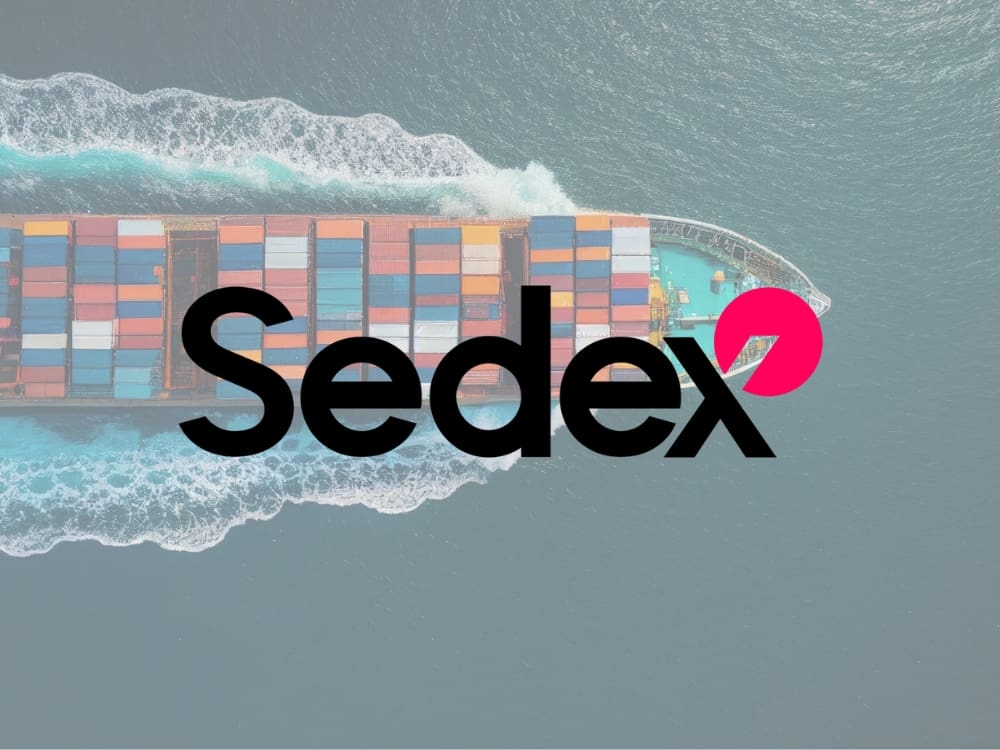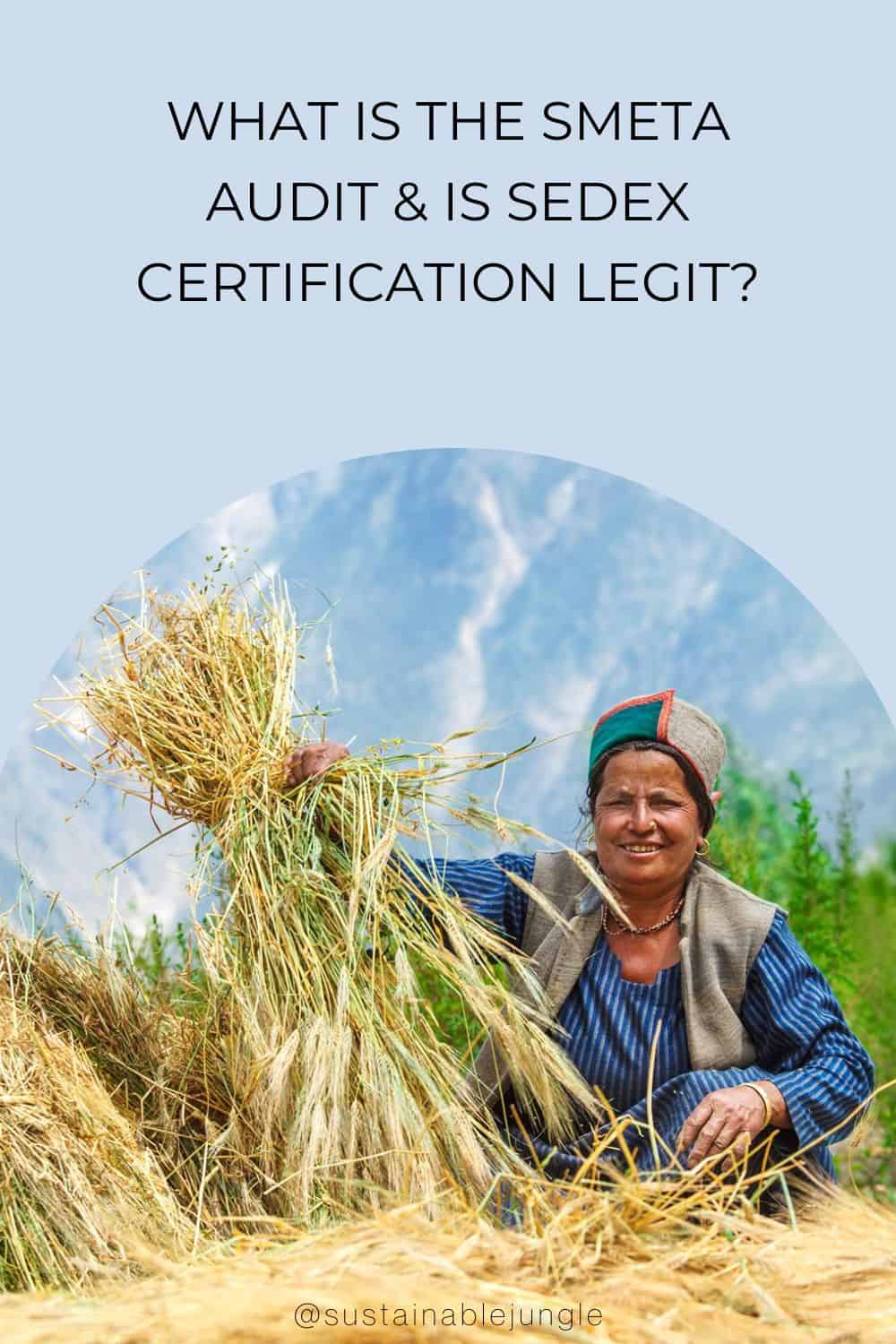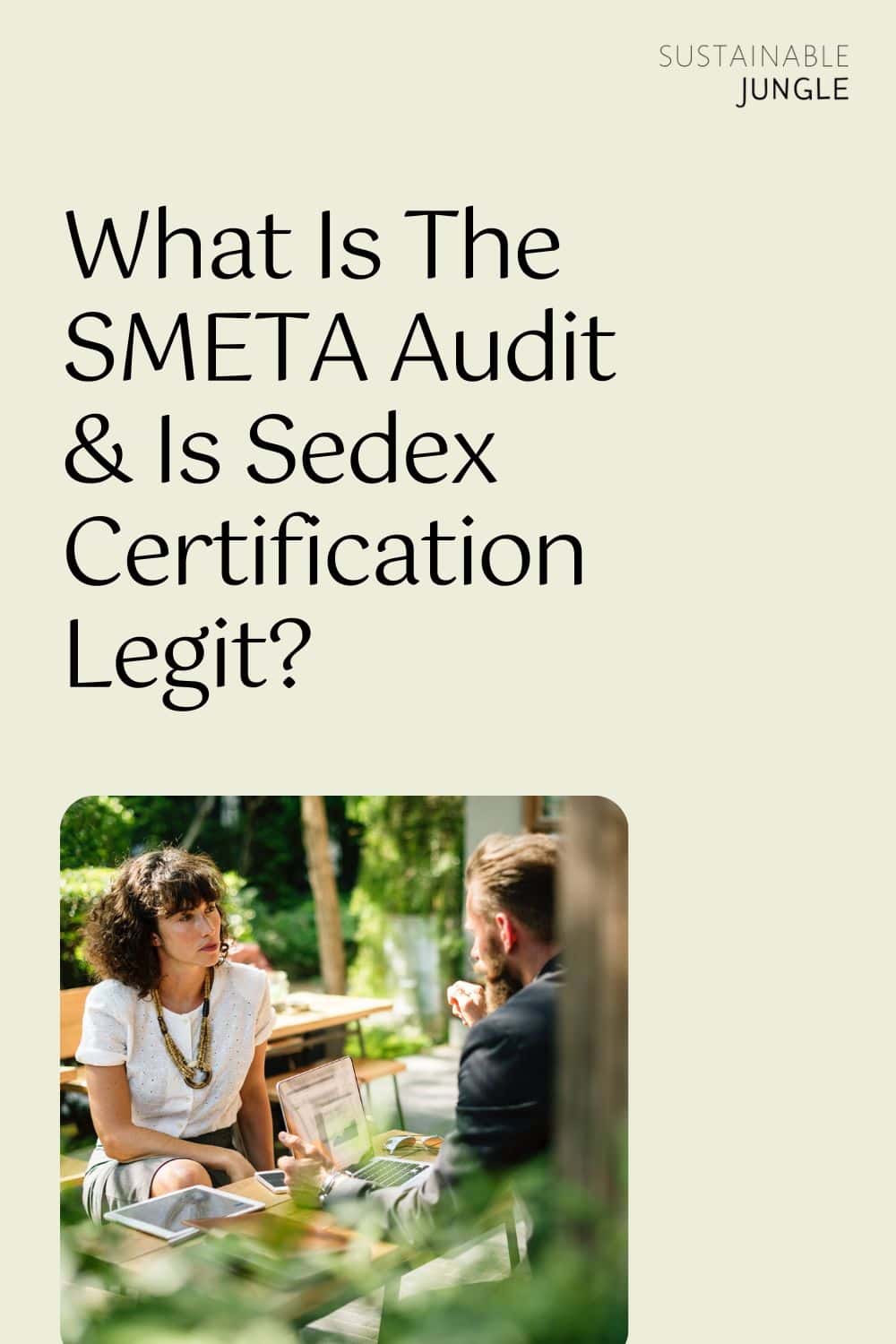
What Is The SMETA Audit & Is Sedex Membership Legit?
Today, it’s not enough for a business to simply exist for profit-making purposes—and we say it’s about time.
Organizations are expected to function as responsible entities that also make a positive impact upon the environment and their communities.
A moral imperative to ensure livelihoods are sustained within the businesses operations and even beyond has led to an uptick in businesses looking to make what is called a “social audit”.
A social or ethical audit is a process whereby a company’s operations, policies, and practices are evaluated in terms of its environmental, social, and ethical impact.
This is commonly referred to in the corporate world as corporate social responsibility, “ESG,” or Environment, Social, and Governance.
For those in the sustainability world, this is a promising development toward more ethical and environmentally sound approaches to doing business—for example ethical sourcing.
Sedex is one of the most popular supply chain sustainability data, insights and services company for businesses and suppliers.
Sedex isn’t an auditor themselves, but rather they partner with other approved third-party Affiliate Audit Companies that use what’s called the SMETA audit methodology to help Sedex member businesses assess and identify potential problems in their supply chain.
But what is the purpose of the SMETA audit?
Ultimately, it’s meant as proof positive that their operations maintain ethical manufacturing that upholds ESG values, but let’s look at what that means and how it does so.
Everything we recommend to you on Sustainable Jungle is independently researched and we ask all brands to confirm their claims. To avoid waste, we test products on an as needed basis. This post contains affiliate links. If you buy something through our links, we may earn a small commission. Learn more about why we do this here.
1. What Is Sedex?

Sedex stands for the Supplier Ethical Data Exchange.
It’s a “profit-for-purpose” organization that seeks to expand responsible and ethical business practices across global supply chains for businesses everywhere.
Sedex offers a means by which corporations can share intel on their suppliers’ ethical performances, looking at factors like business ethics, labor rights, health and safety for workers, and environmental practices.
Under the Sedex umbrella, a variety of services and tools are provided, such as supplier assessment tools, consultancy, training, and a compliance program. Together, this is all meant to help Sedex members implement more ethical supply chain practices.
So, what is Sedex certification?
The Sedex certification meaning is often confused, since Sedex isn’t a certification itself.
Instead, Sedex is a membership organization with a platform for businesses to share information about their social responsibility performance, build transparency in their supply chains, understand and improve social and environmental conditions, and collaborate with each other to drive sustainability.
It essentially enables buyer and supplier businesses to collaborate to resolve issues (called “non-compliances”) identified at an audit, but Sedex does not make any judgement or “certification” related to this.
As of 2023, more than 75,000 members in 180 countries covering 28 million workers use the Sedex platform and their services to manage business risk, meet compliance, share ethical data, and drive positive impact in their global supply chains for workers at every level.
2. What Is A SMETA Audit?

SMETA stands for the Sedex Members Ethical Trade Audit.
In other words, it’s Sedex’s methodology to professionally audit and create evidence-based findings on the environmental, social, and ethical performance of an organization’s supply chain and all involved parties.
It’s used by businesses globally, making it one of the more reliable measures of ethical (or unethical) performance along supply chains.
To develop the SMETA audit, ethical trade principles were lifted from global bodies like the International Labor Organization (ILO) conventions and the Ethical Trading Initiative (ETI) Base Code.
The Sedex network, data platform, and SMETA audit were developed in direct response to both maintaining a responsible business practice and “audit fatigue” amongst the global manufacturing industry, where factories often have multiple customers.
The idea is to replace countless expensive and disruptive audits with a single site audit (factory, warehouse, wherever, as tbhere are no limits on site type) that is published online for a factory’s clients and any prospective clients.
So, is SMETA the same as Sedex? What is the difference between SMETA and Sedex audits?
Sedex is the name of the organization; SMETA is the name of Sedex’s audit methodology.
The audit itself looks at a variety of factors that include business ethics, environmental performance, health and safety for workers, and labor standards.
Sedex SMETA audits come in two different scopes, which are called the 2-pillar and the 4-pillar.
The 2 pillar covers health and safety and labor standards, while the 4-pillar SMETA audit looks at these and then takes it further with an audit of business ethics and environmental performance.
In short, audits involve an initial self evaluation form, an in-person audit, a follow-up, an issued report online, and a Corrective Action Plan to support resolution of non-compliances identified.
Unfortunately, database information isn’t available to the public; only companies who are Sedex members and their suppliers.
3. What Are The 4 Pillars Of SMETA Audits?

Keep in mind that the first two listed here are what you’re getting when a business opts for a 2 Pillar audit, while the SMETA 4-pillar audit includes—you guessed it—all four auditing pillars.
- Labor Standards: This includes wages, working hours, discrimination, child labor, and forced labor. The auditor evaluates whether the supplier in question complies with both international labor laws and regulations and relevant local laws.
- Health & Safety: This means facets like emergency preparedness, workplace safety, and worker access to health care. The auditor evaluates if the supplier provides ample health and safety policies and procedures.
- Environmental Performance: This includes tenets like water use, energy use, waste management, and greenhouse gas emissions. The auditor evaluates to what extent the supplier complies with the relevant environmental regulations and laws.
- Business Ethics: The final pillar addresses governance factors to monitor human rights, corruption, and bribery. The auditor evaluates to what degree the supplier implements the appropriate procedures and policies to prevent unjust conduct.
Auditors then have the ability to more easily evaluate a company’s ethical trade practices and zero-in on areas for improvement.
Companies will often also use the checklist as a self-assessment tool in preparation for their audit and to make sure they already meet the expected ethical standards and SMETA audit requirements.
4. What Is The Purpose Of Sedex’s SMETA Audit?

There are a range of benefits to a company’s supply chain undergoing a Sedex membership by way of SMETA audits.
Here are some of the top reasons for an ethical audit and Sedex membership:
Increased Transparency:
Since SMETA requires a business to disclose the information pertaining to their supply chain, environmental performance, and social performance, it fosters increased transparency.
This is beneficial to building trust with stakeholders, customers, and investors alike.
Combats Audit Fatigue:
Audits are time and energy-intensive. The Sedex platform was specifically developed for suppliers to share a single audit with multiple clients, to meet multiple requirements and reduce duplication and audit fatigue.
Stronger Reputation:
A business demonstrates their commitment to environmental, social, and ethical standards when they aim to become SMETA-audited.
It acts as proof positive that the business cares about more than simply profit and power.
In turn, this evidence of responsible business practices helps to attract those consumers who value ethical business approaches and sustainability efforts.
Risk Mitigation:
Any risks in a company’s supply chain related to health and safety, labor standards, and environmental performance can be identified, addressed, and transformed for the better with SMETA.
This reduces the likelihood of legal liability, negative press, public backlash, or global supply chain disruptions.
Legal Compliance:
To prevent a damaged reputation or fines and fees for misdeeds, SMETA helps a business ensure that they align with relevant legal requirements, such as labor laws, health and safety regulations, and environmental laws.
Improved Supply Chain Performance:
Opportunities to increase energy efficiency, reduce waste, or improve working conditions often emerge through SMETA.
When these opportunities are then pursued, companies can improve the quality of their products and services while increasing efficiency and reducing costs.
Competitive Advantage:
Increase in market share and new customers are often the result of SMETA, meaning these companies can stand apart from competitors and gain a competitive advantage.
Sedex has a global network of specialists and more than 75,000 Sedex members with comprehensive global database of ESG risks across country, industry and issue profiles, covering topics such as working hours, wages, biodiversity, and waste and pollution.
5. How Does The SMETA Audit Work?

The steps of the SMETA audit process are the following:
1. Companies must first join Sedex. Once the organization has decided to join the Sedex network and become a member, they can access all of Sedex’s assessment, reporting, and data-sharing solutions–including access to the SMETA audit.
2. Before SMETA audits are conducted by an affiliate audit company, they receive a pre-audit set of information and instructions that includes a self-assessment questionnaire.
3. On the day of the audit, the auditor holds an opening meeting on-site with the management team, which includes an opening interview.
Here, the auditor also clarifies the ETI Base Code, the standard against which the audit is conducted; they will also share any relevant local regulations or laws.
Additionally, they go through the relevant SMETA assessment areas, points, and processes:
- Receive a floor plan for site tour
- Share the audit company’s own ethics policy
- Review necessary documents for review, which include things like labor contracts, employee handbooks, management system documentation, permits, time sheets, payroll, emergency procedures, chemical use lists, insurance, etc.
- Take photographs and obtain permissions for such
- Ensure all workers are aware of the audit and ensure any relevant standard or code information is already communicated to them.
- Arrange worker interviews
4. The next step is the site tour, where the auditor inspects the workplace conditions set against the applicable standards. Normal production should continue and no work is hindered. They will immediately flag any safety and health problems.
It’s important the auditor set the pace of the tour and not have restricted access to any areas of the site.
5. Next up, interviews. First managers, followed by workers both individually and in groups, without managers present. This allows for workers to express themselves more freely.
6. After interviews, the auditor reviews documents and records to ensure compliance.
7. After all fieldwork, the auditor will return for a meeting (often same day) to discuss any corrective action plan.
The main aim of this closing meeting is to deliver the audit report, inform the findings of the audit to management, and to have it signed off on. They’ll go through any non-compliance, corrective actions, and a proposed schedule for correcting infractions.
8. A follow-up audit is conducted if necessary, annual reporting, and continuous improvement.
9. Additionally, a self-assessment questionnaire can be completed or updated any time by a Sedex member for their site/sites, but this is not always tied to the SMETA audit process.
Everything from the audit will exist in an online database, usually within four days of auditing.
Theis audit report is meant to give a thorough and accurate picture of the workplace findings, along with any correction measure to be taken.
The online platform allows companies to upload evidence of demonstrated improvements. This can then be independently verified by the original on-site auditor to confirm or deny successful remediation. In some instances, in-person follow-up can be necessary.
How Much Does It Cost To Become A Sedex Member?
If you’re curious about the Sedex membership cost, it varies depending on factors such as the complexity of the supply chain, the location of supply chain facilities, and the size of the organization itself.
It is without a doubt an investment that should be evaluated to consider long-term benefits and likely cost savings, in spite of the upfront expenditure.
6. How Does SMETA Help Sustainability?

Put simply, Sedex Members Ethical Trade Audit’s very existence is meant to drive sustainable business practices in global supply chains, especially in the lower tiers.
Oftentimes, suppliers beyond the initial two tiers of supply chains are small businesses who operate far away from the large, international brands that are their clients or customers.
These lower tier suppliers tend to be spread across dozens of countries and sectors, and in regions with weak labor law enforcement, far from the sight of inspectors and social audits.
For these lower tier small business suppliers, notions of “corporate responsibility” or “ethical sourcing” can be totally foreign and unfamiliar, as per feedback Sedex has received from members who report as such.
Why are these concepts relevant to them? Why does it matter? What are the benefits for them?
This is why Sedex can help an entire supply chain to become familiar with what “sustainability” means in more practical terms, and what the benefits are for them.
In turn, this helps supply chain sustainability, which positively impacts people and our planet.
7. Is SMETA/ Sedex Legit & Are There Criticisms?

Sedex is indeed quite legit.
Since it was first developed almost twenty years ago, it has aided thousands of businesses in aligning their ethical trade practices and preventing audit fatigue in factories globally.
That said, it does divide the global ethical trading community.
On the one hand, you have advocates applauding it as a big step forward to aid global companies who have vast, complex supply chains to conduct more efficient ethical trade auditing. In theory, it means their resources can be better allocated to endeavors that truly help improve workers’ lives.
On the other hand, there are those skeptics who hold SMETA as partially responsible for perpetuating an audit-heavy, top-down approach to ethical trade that unfortunately we see in real time as having little positive change for toiling workers.
A further criticism of Sedex is the problem of accuracy. Some say varying and inconsistent standards among auditors are to blame, along with crunched timelines that are recommended in Sedex’s SMETA guidance for rounding out non-compliances, which in turn incentivizes suppliers to deceive.
Plus, there is marketplace confusion as to what Sedex truly is, with some supply chain actors under the false pretense that they’ve joined a “consumer accreditation scheme”.
In turn, this perpetuates a ‘pass-fail’ mentality that it’s about quality control, when really it’s about achieving continual improvement, not giving out a stamp of assurance.
8. What Brands Use SMETA?

A number of our favorite brands at SJ have used SMETA and are members of Sedex.
Here is a partial list, ranging from sustainable fashion to ethical jewelry to sustainable snacks, eco-friendly cookware, organic bedding, and more:
- Alara Wholefoods
- Allbirds
- Astor & Orion
- Caraway
- Conscious Step
- Ecoalf
- Frank And Oak
- LOVETRUST
- Nest Bedding
- Riley Studio
- Sezane
- Patagonia
- Printfresh
- tentree
Did you know we Have a Newsletter?
We cover the latest in sustainable living, fashion, zero waste, beauty, travel, finance and more…
Final Thoughts On Sedex & The SMETA Audit
Conducting SMETA audits is hands-down one of the most important things organizations with a global supply chain can do—at least if they care about sustainable business practices and the social responsibility aspect.
As a growing number of brands prioritize sustainable sourcing, ethics, and social responsibility of their manufacturing process, ethical consumers rely on labels like Sedex and SMETA to tell us that a garment or product was created in such a way that reduces any negative impact on humans, animals, and the environment.
While the Sedex platform isn’t without its criticisms, it’s a massive global compliance and ethical framework that demonstrates people wish to continuously create a better and more just world.
After all, no one said the journey to a more equitable Earth would be easy.
Please bear in mind that as the world evolves, so do ethical and sustainability certifications (fingers crossed for the better) so we always encourage our readers to do further personal research or the most accurate and up-to-date information.
That said, we hope this article has provided you with some important information for all your sustainable shopping endeavors.
If so, consider passing this article along to your friends.
Pin these:





